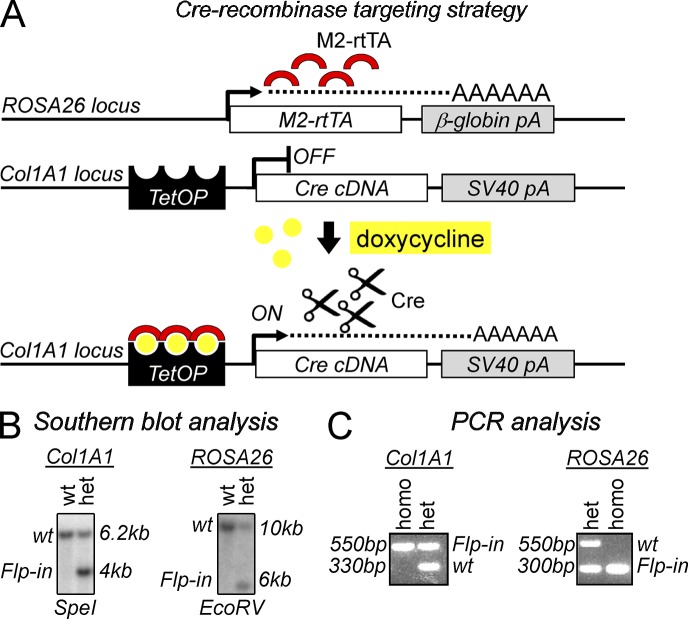Figure 2.
Generation of mice that permit doxycycline-inducible expression of Cre recombinase (TetO-Cre). (A) Alleles for doxycycline-inducible Cre expression. (top) The M2 reverse tetracycline transactivator (M2-rtTA) is constitutively transcribed off the ROSA26 promoter as described in Beard et al. (2006). (middle) Flp-recombinase–mediated site-specific integration was used as described previously (Beard et al., 2006) to insert the Cre cDNA in the 3′ UTR region of the Collagen (Col) 1A1 locus under the control of a tetracycline-dependent minimal CMV promoter. (bottom) Upon doxycycline treatment (yellow dots), the M2 reverse tetracycline transactivator (red semicircles) binds to the CMV promoter and Cre expression is turned on. pA, poly A; TetOP, tetracycline operator elements fused to CMV minimal promoter. (B) Southern blot analysis confirming integration of the Cre transgene in the Col1A1 locus (left) and M2-rtTA Flp-in the ROSA26 locus (right). ES cells double heterozygous for M2-rtTA and TetOP-Cre were used to generate chimeric animals and germline offspring (not depicted). (C) Representative products after three-primer competitive genotyping PCR for Col1A1 and ROSA26 loci from tail-tip genomic DNA. Col1A1 expected bands: Flp-in, 550 bp; WT, 330 bp. ROSA26 expected bands: Flp-in, 300 bp; WT, 550 bp. het, heterozygous; homo, homozygous.

